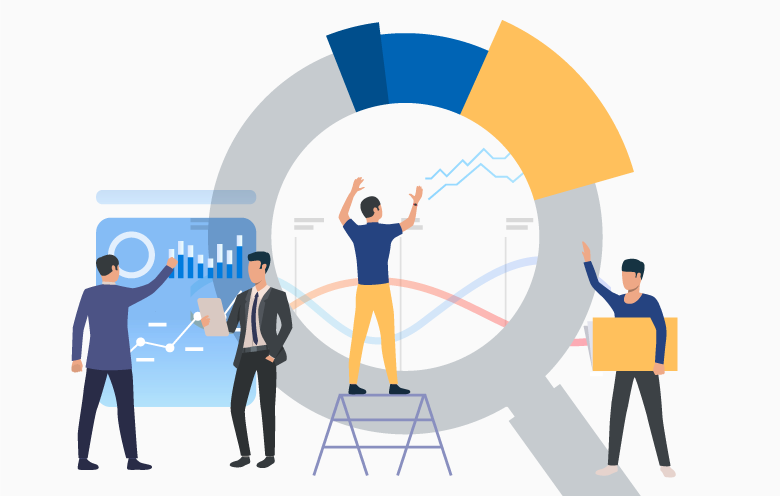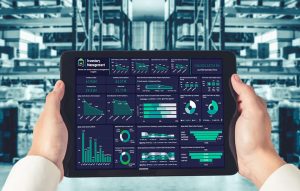In 2023, there will be a lot of upcoming Tableau trends as businesses adopt digital transformation. Tableau is a business intelligence and data visualization tool that enables organizations to meaningfully visualize and explore their data. It enables users to access various data sources, such as databases, spreadsheets, and cloud services, and transform data into dynamic dashboards and visualizations. Whether your company is small or large, advanced Tableau for business intelligence can help you make the most out of your data to achieve your goals.
C-suite executives can use Tableau in data analysis to explore, clean, analyze, and visualize your data in a user-friendly and dynamic manner. It helps to perform complex analyses to gain insights into their data. Therefore, C-suite executives need to keep up with Tableau trends every year. The way businesses access, analyze, and visualize data to gain insights and make decisions will be completely transformed. In today’s data-driven business environment, keeping up with data science aspects is also critical for making strategic decisions.
Data360 Program = Customized Consulting + Services
In this blog, you will look at the current Tableau trends for 2023 and see how they can keep your business one step ahead of the competition.
Tableau’s advanced analytics trends to empower businesses
1. A rise in the adoption of artificial intelligence (AI) and machine learning (ML)
In recent years, the integration of artificial intelligence (AI) and machine learning (ML) with Tableau has become an increasingly popular trend in the field of data science. Organizations of all sizes have realized the value of leveraging the power of Tableau software in combination with AI and ML models to gain deeper insights from their data. As we head into 2023, C-suite executives will envisage the possibilities of AI and ML-powered Tableau data visualization for business success.
By leveraging AI and ML algorithms, your Tableau software can automatically detect patterns and relationships in data, make recommendations, and even predict future outcomes based on historical data. This helps to improve the predictive analytics process and makes it easier to draw actionable insights from the data. As a result, Tableau is becoming increasingly popular across a range of industries, including finance, oil and gas, healthcare, retail and more.
2. Analysis of data at a higher level
As we approach 2023, it is expected that there will be several major trends in Tableau for data analysis. These trends will enable decision-makers to make more informed, smarter decisions.
Tableau can already gain insights from data in real-time. However, with the advent of the Internet of Things (IoT), more and more data is being generated daily. So, decision-makers need to process and analyze data in real time at a greater level using Tableau advanced analytics. This also helps them to get the most up-to-date information about their company. And further enable them to make more informed decisions quickly, as well as identify new opportunities and risks.
Another trend in Tableau in 2023 is an increase in the use of natural language processing (NLP). NLP can be used to process unstructured data like customer sentiment or social media posts. This provides decision-makers with insights into customer sentiment, preferences, and even market trends. In addition, NLP can be used to automatically generate reports, allowing users to make more informed decisions faster.
3. A strong focus on data governance
As the real world in 2023 becomes more data-driven, an increasing number of organizations are turning to Tableau software to gain insights from their data. Tableau’s smart analytics platform enables organizations to visualize and analyze data in meaningful ways. As data management and governance become increasingly important, Tableau is proving to be an indispensable tool for companies looking to stay ahead of the curve.
In 2023, we will see Tableau trends focus more on data governance. This is because organizations understand that if they effectively manage and govern their data sets, they will be most successful in the long run. Furthermore, Tableau data governance provides a diverse set of tools to assist organizations with everything from data lineage tracking to data quality management.
4. A more collaborative and interactive visualization environment
In recent years, there has been a trend toward more collaborative and interactive visualizations. This has been driven by the increasing demand for decision-making based on data, where teams need to work together and explore data from multiple angles.
One of the ways Tableau advanced analytics is enabling more collaboration and interactivity is by integrating with other tools and platforms. Tableau, for example, has partnerships with Microsoft, Salesforce and AWS, allowing for seamless integration with these platforms.
Apart from this, Tableau’s feature on Tableau Server allows teams to securely share and publish their dashboards and reports. This makes it easy for multiple users to access and interact with the same data.
Also, Tableau Prep makes it simpler for users to clean and prepare their data. Users can interact with dashboards and reports using Tableau Reader even if they do not have Tableau Desktop installed. Touch-based interactions and gestures are also supported by Tableau, allowing users to manipulate data and explore advanced Tableau visualizations on mobile devices.
Finally, as already mentioned Tableau has been heavily investing in AI and ML capabilities to enable more interactive and collaborative visualizations. Tableau’s new Explain Data feature, for example, allows users to ask questions about their data and gain insights through AI-powered analysis.
The ability to automatically generate insights and forecasts is another feature of Tableau’s machine learning capabilities. As a result, data scientists will spend less time and effort manually analyzing data sets. As businesses demand more from their data and analytics tools, the trend toward more collaborative and interactive visualizations is likely to continue.
5. An increased prominence on cloud-based solutions
As technology continues to advance, there is a growing trend towards cloud-based solutions in the business world. Tableau, a leading data visualization software, is no exception. With the increasing demand for cloud computing, Tableau has placed greater emphasis on developing cloud-based solutions to help organizations make better use of their data.
Tableau has responded to this trend by providing a cloud-based version of its software, Tableau Online, which allows users to access, visualize and share their data from anywhere, at any time. This solution provides businesses with the ability to collaborate on data analysis in real-time and make better data-driven decisions.
Tableau’s cloud-based solutions provide several benefits over traditional desktop software, including:
- Scalability: Handle large amounts of data and scale to meet the needs of businesses of all sizes.
- Flexibility: Access from any device, making it easy for employees to work from anywhere and on any device.
- Security: Highly secure with built-in security measures to protect sensitive data.
- Cost savings: Reduce costs associated with maintaining and updating software and hardware.
To summarize, the increased emphasis on cloud-based solutions is a trend that Tableau is capitalizing on to provide its customers with the ability to work with their data more efficiently and effectively. With the benefits of cloud computing, Tableau’s cloud-based solutions are an important tool for organizations looking to make better use of their data.
6. More integration with other platforms
One of the trends in Tableau is increased integration with other platforms. Tableau is becoming more integrated with other data platforms, such as cloud-based data warehouses, data management systems, and analytics tools, as organizations move toward a more holistic and integrated approach to their data. This integration enables organizations to centralize all their data and analyze it in a more meaningful and effective manner.
Tableau can also be integrated with more visualization tools and collaboration platforms to improve the sharing and collaboration of insights and findings. These integrations provide organizations with a more unified data management and analysis solution, allowing them to make better decisions and achieve their business objectives.
Realize the potential of your data with advanced analytics in Tableau, enabling deeper insights and smarter decisions. You can create advanced Tableau dashboards to visualize complex data and drive impactful business outcomes.
These are just a few notable trends in Tableau for data analysis in 2023 that enterprise decision-makers should be aware of.
Discover insights and drive change with Tableau trends 2023
Undoubtedly, Tableau is expected to continue to grow and evolve in the coming years. To summarize, the tool will remain a leading data visualization and analytics tool in 2023 and beyond, with an eye toward advanced technologies, collaboration, automation, and AI. Harness the power of advanced analytics with Tableau to uncover deep insights and drive strategic decisions. Leverage Tableau predictive analytics to forecast trends and stay ahead of the competition. If you want to know more about how to leverage Tableau trends in your existing business models, talk to our experts.









